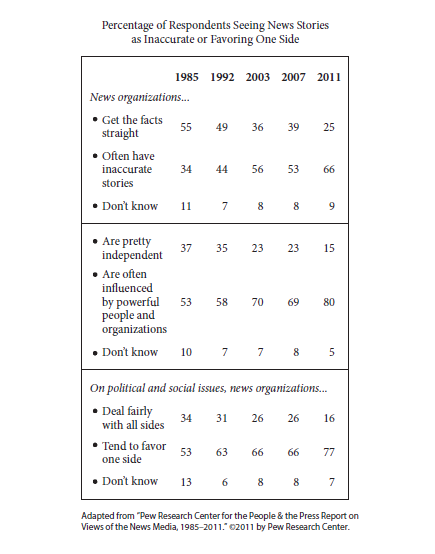In a normal pregnant woman, the amount of total gonadotropin activity was assessed.
The result expected was
High levels of FSH and LH in uterus to stimulate endometrial thickening
High level of circulating HCG to stimulate estrogen and progesterone synthesis
High level of circulating FSH and LH in the uterus to stimulate implantation of the embryo
High level of circulating HCG to stimulate endometrial thickening
Step by step video solution for In a normal pregnant woman, the amount of total gonadotropin activity was assessed. The result expected was by Biology experts to help you in doubts & scoring excellent marks in Class 12 exams.
Updated on:21/07/2023Similar Questions
Knowledge Check
A sociologist chose 300 students at random from each of two schools and asked each student how many siblings he or she has. The results are shown in the table below.

There are a total of 2,400 students at Lincoln School and 3,300 students at Washington School.
Based on the survey data, which of the following most accurately compares the expected total number of students with 4 siblings at the two schools?AThe total number of students with 4 siblings is expected to be equal at the two schools.BThe total number of students with 4 siblings at Lincoln School is expected to be 30 more than at Washington School.CThe total number of students with 4 siblings at Washington School is expected to be 30 more than at Lincoln School.DThe total number of students with 4 siblings at Washington School is expected to be 900 more than at Lincoln School.This passage is adapted from Stephen Coleman, Scott Anthony, and David E. Morrison, “Public Trust in the News.” ©2009 by Stephen Coleman.
The news is a form of public knowledge. Unlike personal or private knowledge (such as the health of one’s friends and family, the conduct of a private hobby, a secret liaison), public knowledge increases in value as it is shared by more people. The date of an election and the claims of rival candidates, the causes and consequences of an environmental disaster, a debate about how to frame a particular law, the latest reports from a war zone—these are all examples of public knowledge that people are generally expected to know in order to be considered informed citizens. Thus, in contrast to personal or private knowledge, which is generally left to individuals to pursue or ignore, public knowledge is promoted even to those who might not think it matters to them. In short, the circulation of public knowledge, including the news, is generally regarded as a public good which cannot be solely demand-driven.
The production, circulation, and reception of public knowledge is a complex process. It is generally accepted that public knowledge should be authoritative, but there is not always common agreement about what the public needs to know, who is best placed to relate and explain it, and how authoritative reputations should be determined and evaluated. Historically, newspapers such as The Times and broadcasters such as the BBC were widely regarded as the trusted shapers of authoritative agendas and conventional wisdom. They embodied the Oxford English Dictionary’s definition of authority as the “power over, or title to influence, the opinions of others.” As part of the general process of the transformation of authority whereby there has been a reluctance to uncritically accept traditional sources of public knowledge, the demand has been for all authority to make explicit the frames of value which determine their decisions. Centres of news production, as our focus groups show, have not been exempt from this process. Not surprisingly perhaps some news journalists feel uneasy about this renegotiation of their authority:
Editors are increasingly casting a glance at the “most read” lists on their own and other websites to work out which stories matter to readers and viewers. And now the audience—which used to know its place—is being asked to act as a kind of journalistic ombudsman, ruling on our credibility (broadcast journalist, 2008).
The result of democratising access to TV news could be political disengagement by the majority and a dumbing down through a popularity contest of stories (online news editor, 2007).
Despite the rhetorical bluster of these statements, they amount to more than straightforward professional defensiveness. In their reference to an audience “which used to know its place” and conflation between democratisation and “dumbing down,” they are seeking to argue for a particular mode of public knowledge: one which is shaped by experts, immune from populist pressures, and disseminated to attentive, but mainly passive recipients. It is a view of citizenship that closes down opportunities for popular involvement in the making of public knowledge by reinforcing the professional claims of experts. The journalists quoted above are right to feel uneasy, for there is, at almost every institutional level in contemporary society, scepticism towards the epistemological authority of expert elites. There is a growing feeling, as expressed by several of our focus group participants, that the news media should be “informative rather than authoritative”, the job of journalists should be to “give the news as raw as it is, without putting their slant on it”, and people should be given “sufficient information” from which “we would be able to form opinions of our own.”
At stake here are two distinct conceptions of authority. The journalists we have quoted are resistant to the democratisation of news: the supremacy of the clickstream (according to which editors raise or lower the profile of stories according to the number of readers clicking on them online), the parity of popular culture with “serious” news, the demands of some audience members for raw news rather than constructed narratives.

The authors indicate that the public is coming to believe that journalists’ reports should avoidApersonal judgments about the events reportedBmore information than is absolutely necessaryCquotations from authorities on the subject matterDdetails that the subjects of news reports wish to keep private.
Select the correct option decribing gonadotropin activity in a normal pregnant female:
View SolutionDue to interference of pathogen in normal vital activities results:-
View SolutionAlbinism, the total lack of melanin pigment, it due to a recessive
gene a. A normal man and a normal woman both of whom had one albino parent, marry. What is the probaility of them having an albino child ?
View SolutionComprehension-1
Two closed identical conducting containers are found in the laboratory of an old scientist. For the vertification of the gas some experiments are performed on the two boxes and the results are noted.

Experimenet 1.
When the two containers are weighed WA=225tg,WB=160g and mass of evacuated container WC=100g.
Experiment 2.
When the two containers are given same amount of heat same temperature rise is recorded. The pressure changes found are
ΔPA=2.5atm,ΔpB=1.5atm.
Required data for unknown gas:
∣∣ ∣ ∣ ∣ ∣∣Monomolar massHeNeArKrXeRd4g20g40g84g131g222gDiamolarmassH2F2N2O2CI22g19g28g32g71g∣∣ ∣ ∣ ∣ ∣∣
Total number of molecules in 'A' (here NA= Avagadro number)
View SolutionComprehension-1
Two closed identical conducting containers are found in the laboratory of an old scientist. For the vertification of the gas some experiments are performed on the two boxes and the results are noted.

Experimenet 1.
When the two containers are weighed WA=225tg,WB=160g and mass of evacuated container WC=100g.
Experiment 2.
When the two containers are given same amount of heat same temperature rise is recorded. The pressure changes found are
ΔPA=2.5atm,ΔpB=1.5atm.
Required data for unknown gas:
∣∣ ∣ ∣ ∣ ∣∣Monomolar massHeNeArKrXeRd4g20g40g84g131g222gDiamolarmassH2F2N2O2CI22g19g28g32g71g∣∣ ∣ ∣ ∣ ∣∣
Total number of molecules in 'A' (here NA= Avagadro number)
View SolutionHaemolytic jaundice is due to dominant gene but only 20% of the people develop this disease. A heterozygous man marries a homozygous normal woman. What proportion of the children in population would be expected to have this disorder :-
View Solution
